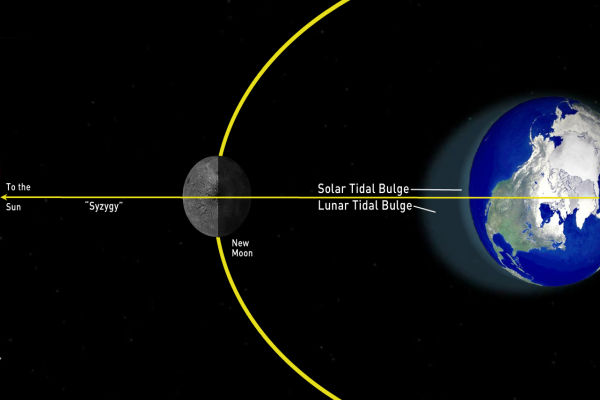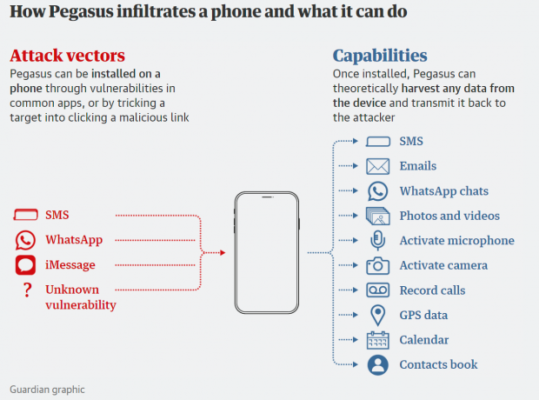- Home
- Prelims
- Mains
- Current Affairs
- Study Materials
- Test Series
 EDITORIALS & ARTICLES
EDITORIALS & ARTICLES
19th July 2021
HOW THE MOON ‘WOBBLE’ AFFECTS RISING TIDES
Recently, a study has published that the Wobble effect of Moon is expected to lead to more flooding here on Earth in the middle of the next decade.
Moon Wobble?





- It is a regular oscillation that humans have known about for centuries.
- It is one of many factors that can either exacerbate rising sea levels or counteract them, alongside other variables like weather and geography.
- It was first documented way back in 1728.
- The wobble takes over an 18.6-year period to complete, and continues in a cyclic fashion.
- The study aimed to untangle all of those variables in an effort to improve predictions about the future of floods.
- The results underscored a basic fact separate from the movement of the moon that our oceans are raising because of climate change.
- The rising temperatures caused by greenhouse gas emissions are not the only cause of higher flood risks and the report explored the interplay of many variables that push and pull at ocean levels.
- The study warned that we should expect this wobble to heighten high tides in the middle of the 2030's.

- The high tides on this planet are caused mostly by the pull of the moon’s gravity on a spinning Earth and on most beaches, we would see two high tides every 24 hours.
- The moon also revolves around the Earth about once a month, and that orbit is a little bit tilted.
- The path of the moon’s orbit seems to fluctuate over time and completing a full cycle (referred to as a nodal cycle) every 18.6 years.
- At certain points along the cycle, the moon’s gravitational pull comes from such an angle that it yanks one of the day’s two high tides a little bit higher, at the expense of the other.
- It does not mean that the moon itself is wobbling, nor that its gravity is necessarily pulling at our oceans any more or less than usual.
- The high-tide flooding related to climate change is expected to break records with increasing frequency over the next decade.
- The effect of the wobble could cause high tide levels at a beach to oscillate by 1 or 2 inches over the course of its long cycle.
- In half of this lunar cycle, Earth's regular daily tides are diminished, with high tides lower than usual and low tides higher than usual.
- In the cycle's other half, the situation is reversed, with high tides higher and low tides lower.
- The moon wobble impacts the gravitational pull of the moon, and therefore, indirectly influences the ebb and flow of tides here on the Earth.
- The lunar cycle is expected to shift again by mid-2030, and in the coming phase, the tides will amplify once again.
- The upcoming changes in the lunar cycle will pose a serious threat, as the amplified high tides coupled with the rising sea levels will make the risk of flooding far greater across all coastal regions of the globe.
- The study predicts that the high tide-associated floods, also known as nuisance floods or sunny day floods, may occur in clusters that could last for months or even for longer periods.

- It is manufactured by Lockheed Martin Corporation, USA.
- It is an all-weather helicopter designed to support multiple missions with state of the art avionics/ sensors.
- The induction of these MRH would further enhance Indian Navy’s three dimensional capabilities.
- It will enhance navy-to-navy cooperation and strengthen our combined subsurface and surface warfare capability and capacity in the Indo-Pacific region.
- It is the most advanced maritime multi-mission helicopter in operation deployed globally.
- It is the US Navy's primary anti-submarine and anti-surface warfare helicopter and is also capable of search and rescue and supply missions.
- The surveillance was carried out using a spyware tool called Pegasus.
- All spyware do what the name suggests i.e. they spy on people through their phones.
- Pegasus works by sending an exploit link, and if the target user clicks on the link, the malware or the code that allows the surveillance is installed on the user’s phone.
- It is developed by an Israeli firm, the NSO Group.
- The first reports on Pegasus’s spyware operations emerged in 2016, when Ahmed Mansoor, a human rights activist in the UAE, was targeted with an SMS link.
- In September 2018, the Citizen Lab showed that Pegasus delivers a chain of zero-day exploits to penetrate security features on the phone and installs Pegasus without the user’s knowledge or permission.
- In December 2018, Montreal-based Saudi activist Omar Abdulaziz lodged a case against the NSO Group in a court in Tel Aviv, alleging that his phone had been infiltrated using Pegasus.
- In May 2019, the Financial Times reported that Pegasus was being used to exploit WhatsApp and spy on potential targets.

- The Citizen Lab post said Pegasus can send back the target’s private data, including passwords, contact lists, calendar events, text messages, and live voice calls from popular mobile messaging apps.
- The target’s phone camera and microphone can be turned on to capture all activity in the phone’s vicinity, expanding the scope of the surveillance.
- The malware can also access email, SMS, location tracking, network details, device settings, and browsing history data.
- The key features of Pegasus are:
- Ability to access password-protected devices;
- Being totally transparent to the target;
- Leaving no trace on the device;
- Consuming minimal battery, memory and data so as to not arouse suspicion in more alert users;
- A self-destruct mechanism in case of risk of exposure; and
- Ability to retrieve any file for deeper analysis
- A zero-click attack helps spyware like Pegasus gain control over a device without human interaction or human error.
- Most of these attacks exploit software which receive data even before it can determine whether what is coming in is trustworthy or not, like an email client.
- The vulnerability allows remote code execution capabilities and enables an attacker to remotely infect a device by sending emails that consume a significant amount of memory.
- The zero-click attacks are hard to detect given their nature and hence even harder to prevent.
- Section 9 of the Hindu Marriage Act, 1955, which deals with restitution of conjugal rights, reads:
- When either the husband or the wife has, without reasonable excuse, withdrawn from the society of the other, the aggrieved party may apply, by petition to the district court, for restitution of conjugal rights; and
- The court, on being satisfied of the truth of the statements made in such petition and that there is no legal ground why the application should not be granted, may decree restitution of conjugal rights accordingly.
- Conjugal rights are rights created by marriage, i.e. right of the husband or the wife to the society of the other spouse.
- The law recognizes the rights i.e. both in personal laws dealing with marriage, divorce etc., and in criminal law requiring payment of maintenance and alimony to a spouse.
- Section 9 of the Hindu Marriage Act recognizes one aspect of conjugal rights i.e. the right to consortium and protects it by allowing a spouse to move court to enforce the right.
- The concept of restitution of conjugal rights is codified in Hindu personal law now, but has colonial origins and has genesis in ecclesiastical law.
- In 1970, the United Kingdom repealed the law on restitution of conjugal rights.
- If a spouse refuses cohabitation, the other spouse can move the family court seeking a decree for cohabitation.
- If the order of the court is not complied with, the court can attach property.
- The decision of the family court can be appealed before a High Court and the Supreme Court.
- When a spouse files for divorce unilaterally, the other spouse files for restitution of conjugal rights if he or she is not in agreement with the divorce.
- The provision is seen to be an intervention through legislation to strike a conciliatory note between sparring spouses.
- The law is being challenged now on the main grounds that it is violative of the fundamental right to privacy.
- The petition plead that a court-mandated restitution of conjugal rights amounted to a “coercive act” on the part of the state, which violates one’s sexual and decisional autonomy, and right to privacy and dignity.
- In 2019, a nine-judge Bench of the Supreme Court recognised the right to privacy as a fundamental right.
- The legal experts have pointed out that the nine-judge Bench’s landmark verdict in the privacy case set the stage for potential challenges to several laws such as criminalization of homosexuality, marital rape, restitution of conjugal rights, the two-finger test in rape investigations.
- The law is ex-facie (‘on the face if it’) gender-neutral because it allows both wife and husband to seek restitution of conjugal rights, the provision disproportionately affects women.
- It will also be argued whether the state can have such a compelling interest in protecting the institution of marriage that it allows a legislation to enforce cohabitation of spouses.
- In 1984, the Supreme Court had upheld Section 9 of the Hindu Marriage Act in the case of Saroj Rani v Sudarshan Kumar Chadha.
- It held that the provision serves a social purpose as an aid to the prevention of break-up of marriage.
- In 1983, a single-judge bench of the Andhra Pradesh High Court had for the first time struck down the provision in the case of T Sareetha vs T Venkatasubbaiah and declared it null and void.
- The court also held that in a matter so intimately concerned the wife or the husband the parties are better left alone without state interference.
- The court had also recognised that compelling “sexual cohabitation” would be of “grave consequences for women”.
- The Delhi High Court added that it is in the interests of the State that family life should be maintained, and that homes should not be broken up by the dissolution of the marriage of parents.
- The Supreme Court upheld the Delhi High Court view and overruled the Andhra Pradesh High Court verdict.









 Latest News
Latest News General Studies
General Studies